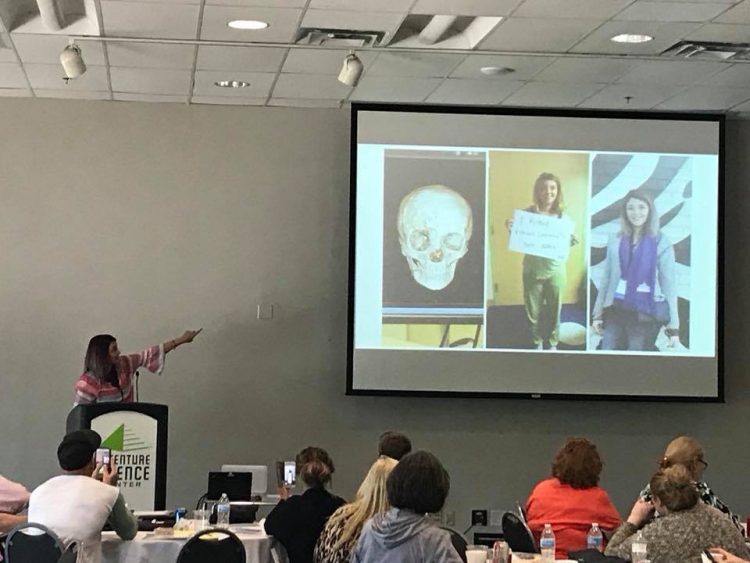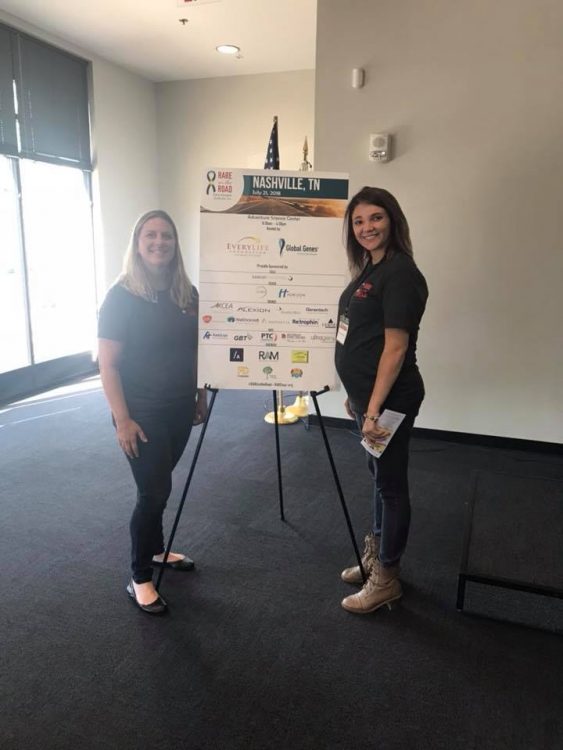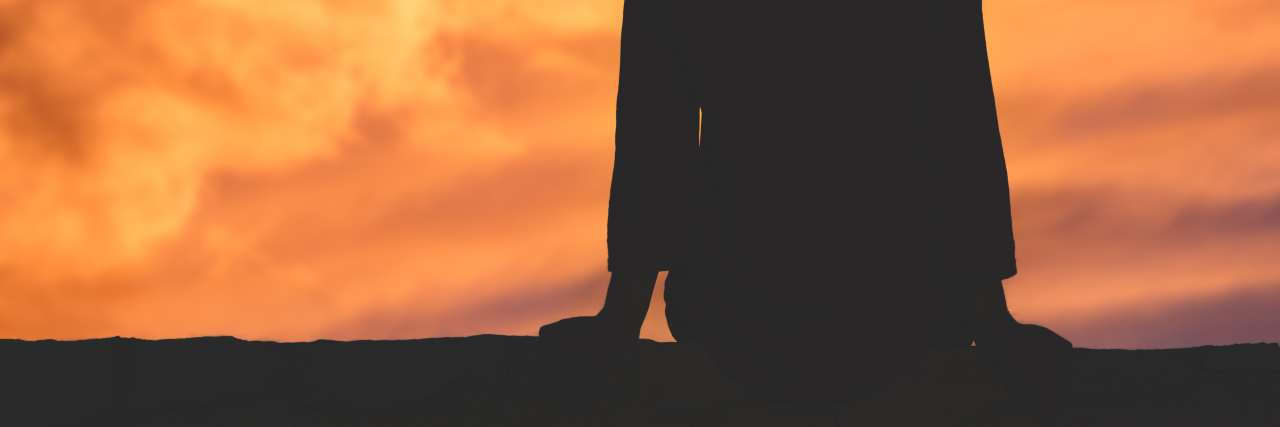Four years ago I was standing where you are. Surrounded by loved ones, yet feeling more alone than ever. I’d just underwent my second facial reconstructive surgery for my rare bone disease, fibrous dysplasia. I was on a leave of absence from work, supposed to be on bed rest for a least a month after a two-week stay in the hospital.
While my mom and husband were there supporting me emotionally, physically, and financially, I was losing friends left and right. My co-workers were telling customers and management I was faking the surgery, as well as the pain and severity of the procedure.
My small town, my home, felt as if it was turning against me. I would lay in bed wondering how I had reached this point in my life. At 20 years old, I felt like nothing more than a burden to the world. My friends were gone; my home felt like a jail.
How had I let my disease push me to this point? Fibrous dysplasia had taken control of my life.
My name is Skye, and the answer to my question had been almost eight years coming. The answer was simple and almost comical– the answer was my silence towards my disease, and it started when I was 12 years old.
I’d always experienced migraines — not headaches — knock you out, non-functional migraines. In 2007 though, my pain was worse than unbearable. The pain was so severe I would come home from school and go straight to bed because sleep was the only relief I had. My mom scheduled doctor appointment after doctor appointment, desperately searching for an answer for her little girl. The solutions she repeatedly found were mediocre such as
“Drink more water.” Done.
“Cut out sugar.” Done.
“Wear your hair down.” Done.
“Take pain medicine.” Done.
There was still no change to my well-being. At this point, I was a 12-year-old child literally living in pain and we had no idea why.
One day, we got the call we had been waiting on. We had found a doctor who knew exactly what was wrong with me. In January 2007, following a bone biopsy, we discovered I was born with a genetic mutation that resulted in fibrous dysplasia (FD). FD is a rare bone disorder in which scar-like or fibrous tissue develops in the place of normal bone, causing irregular tissue to weaken the affected bone. This in turn causes deformity, fractures, and pain. Although FD can affect any and every bone in the body, my FD is located in the entire right side of my face and skull.
They told us there is no cure, and no treatment plan. They told us my only option would be surgery. They told us I would likely have to undergo multiple surgeries throughout my life as FD is affected by my hormones. With every change of hormones, my FD would flare up. We assumed this meant puberty, pregnancy, menopause. Unfortunately, we didn’t realize not only would my FD flare up with every major life change like pregnancy, my FD would flare up with every menstrual cycle and the migraines wouldn’t stop…even if the flare-up had.
Looking back on that time, I don’t remember panicking. I don’t remember being scared. I remember hearing the answer we had been searching for and then watching my family cry. My family would look at me, and cry, but I didn’t understand why. So I stayed silent.
Flash forward a few weeks and I remember walking down the halls of my elementary school listening to different teachers and guidance counselors attempt to make me feel better, comparing my diagnosis to diseases they had read about, even going as far to tell me I should just be thankful I don’t have brain cancer. At 12 years old, I listened to different opinions telling me my disease wasn’t a big deal, it was close to nothing and I was not allowed to complain of the pain or use my fibrous dysplasia as a crutch when my eyesight started to waver. This is where I believe I made my first, of many, silent mistakes. Instead of defending myself and my health, I nodded, thanked them for their time, stayed silent, and kept going.
Three months after my official diagnosis, I underwent my first facial reconstructive surgery. Laying in the hospital bed waiting to be rolled back to surgery, the doctors came in to explain everything my body was about to go through. My surgeon said he would cut me from ear to ear, pull my face down, shave back/decompress the FD, then take a piece of my rib and reconstruct a new eye socket for me. They explained it was natural to be scared, and asked me what I was most afraid of for this process. I had listened to so many people tell me this disease, this surgery, this entire process was nothing, and that is what I believed. Instead of communicating with the doctors and filling them in on everything I had been told, I simply stated I was afraid of the IV they would put in. Fibrous dysplasia had been downplayed so much already that I was more worried about the the IV than the life-threatening surgery I was about to have. I recovered fairly quickly after a few weeks in the hospital and went back to school thinking life would return to normal, or as normal as life can be for a 12-year-old preteen. And this is where I made my second silent mistake. Whispers had started about me faking my disease. At such a young age, other children had formed opinions about my health and life and even worse, teachers were doing nothing to help me. I was told I was too dramatic and that I didn’t have a clue what really being sick meant. Despite some swelling, bruising, an obvious incision on my head, I looked normal. Most people, adults and children alike, were too ignorant to comprehend what they couldn’t see. So rather than defending myself, my condition, and my life, I stayed quiet.
I began to let the whispers define me.
This system of silence continued for eight long years — eight years of judgmental statements comparing my critical condition to nothing more than an occasional headache. People constantly reminding me of how I should feel. I was told I should be thankful I do not have cancer. I was told not use my FD as a crutch when I wasn’t feeling up to par. The few people I trusted with my secret didn’t believe me, they laughed and said I was lying. Yet again, I did not defend myself.
Thinking high school would be the end of my problems, I started college and adult life hopeful that life would keep me happy, healthy and continue letting me deal with flare-ups the best way I knew how: silent and sleeping. I was a waitress working through my first year of college, in love with my middle school sweetheart, and achieving the goals I had set for myself. Unfortunately by the end of my first year of college, my vision had spun radically down hill. I was seeing double and the pain was breaching past the point of unbearable again. So I traveled the three hours to my see my doctor, here in Nashville, to be told what I already knew. It was time to schedule my second facial reconstructive surgery — same process as before, only on a body and mind that wasn’t quite as resilient as a 12-year-old.
I went back to work and shared the news, expecting my friends to say they were there for me. Instead, I was met with disbelief. The whispers I thought I left behind in high school started again. Because I had kept my silence for so long, no one knew how much I had been struggling. This meant no one understood where this sudden illness had come from because they were unaware of my condition.
Just like before, they could not believe or understand what they could not see. The few friends I had made after high school began to disappear, looking for someone with less baggage than a chronically ill patient. I started to hear second-hand how dramatic I was and how I “had to be lying” about everything as there was no way someone as “normal” and “healthy-looking” as I was could possibly have something so seriously wrong.
The day they scheduled my surgery was the day I decided to break my silence. I decided from that day forward I would start defending myself, defending others with invisible illnesses like mine. I decided to make a change, not just for me, but for those around me too. I made the decision to fight for myself, because while you can’t control anyone else’s reaction to your disease, you can control yours. You get to choose between letting your rare disease define and defeat you, or giving your condition, your life, a new fight. You get to decide to give yourself the chance to hope, the chance to just breathe again.
Rare disease warriors say it all the time: no one understands what we go through except us. No one can relate to us. No one can sympathize with us. We are alone. Here’s the thing though, we don’t have to be. We can make the decision to help end our suffering. We can let go of the silence and stand up for ourselves. Letting go of our silence can be as easy as searching on Facebook for support groups with others with your condition. It can be as simple as starting your own support group. You can share your story with co-workers, with your server at the local restaurant. You can share your story on social media platforms. You can decide to be your own advocate.
An advocate is someone who uses their voice to make a change.

Advocating for yourself can be as simple as leaving brochures covering your disease behind at doctor’s offices to educate others. You can upload a video online of you telling your own story, or even doing a fun, silly dance in a car with your best friend and taking 15 seconds out to talk about rare disease and what you are experiencing. You can take advantage of organizations like the EveryLife Foundation who help organize “Rare on the Road,” or take the leap and travel to our nation’s capital to defend your disease at Rare Disease Week on Capitol Hill. EveryLife Foundation organizes an entire week in your honor, on our day. EveryLife Foundation and similar organizations will coach you and give you the training you need to get your point across most effectively. You are given the opportunity to make the changes that will help the rare disease community. You are given the chance to share your stories with members of Congress; all you have to do is let go of the silence and speak your truth.
Putting yourself out there won’t be easy. You will feel vulnerable, naked, terrified even, of the reaction you will receive. You won’t feel scared of the members’ reaction though.
What will hit you most is realizing that as you are saying how much you struggle, your family will learn intimate moments you’ve experienced that you were always too nervous to share with them. Your spouse will learn how you felt like you were dying on the inside while they stood by, thinking you were fine. Your parents will find out the words they meant as encouragement only drained you even further.
So, no. Being your own advocate may not always be easy, it may be harder than what you could prepare for — and I think that is the point. I think that is normal because nothing easy has ever been worth it. And, believe me, you are worth this fight.
Though I was quiet for years, I was not blind. I saw how people around me reacted to my situation. I see how others in similar circumstances to mine react. I see some hiding behind their disease while others are fighting hard for the change they know they deserve. I see how you are reacting to me now, putting myself out there, asking you to put yourself out there too. You may think I am a little “out there,” and maybe I am, but I want you to look around you. Look where you are. You took the first step here. The next step is sharing your story and observing how everyone isn’t reacting to you out of pity. When they look at you, they see what I see: your strength, your courage, and your will. If you ever doubt that, I want you to repeat after me, “It is not my fault that I am sick, and I am worth every ounce of fight I have in me. I am worth it.”
My name is Skye Miu Steppe, and I will be one of the warriors representing fibrous dysplasia during Rare Disease Week on Capitol Hill next year, will you be there with me?


